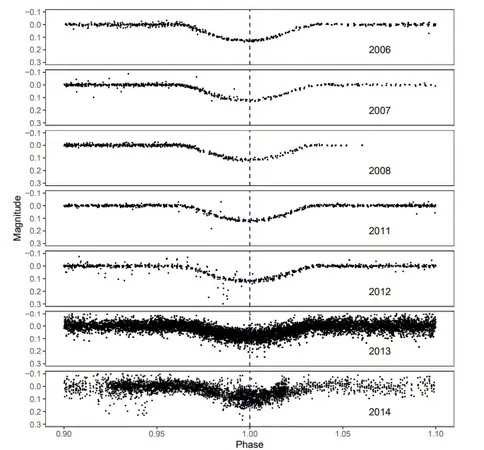
Astronomers Unveil Stunning Discovery of a Young Eclipsing Binary System!
2025-09-10
Author: John Tan
Unlocking the Mysteries of Stellar Evolution
In a groundbreaking revelation, an international team of astronomers has discovered a new pre-main-sequence eclipsing binary system, aptly named MML 48. This exciting find, set to be detailed in an upcoming issue of Astronomy & Astrophysics, sheds light on the early stages of stellar evolution.
What Are Eclipsing Binaries?
Eclipsing binaries (EBs) are stellar systems characterized by regular light fluctuations caused by one star passing in front of another. This unique alignment allows astronomers to capture precise measurements of the stars' mass, radius, and temperature, making EBs critical for testing and refining theoretical models of stellar evolution.
Why Young EBs Matter
The search for young EBs is particularly significant because they help validate models of pre-main-sequence (PMS) stellar evolution. During this rapid transformation phase, stars undergo notable changes in temperature, luminosity, and size as they prepare to enter the main sequence.
The Discovery of MML 48
Led by Yilen Gómez Maqueo Chew from the National Autonomous University of Mexico (UNAM), the astronomers utilized a combination of cutting-edge spacecraft and ground-based observatories to detect this unique binary system located in the Upper Centaurus Lupus (UCL) region.
A Glimpse into the Future of Stars
The study reveals that MML 48 consists of two stars still in their infancy, approximately 16 million years old. The primary star, MML 48 A, boasts a radius of 1.57 solar radii and weighs in at 1.2 solar masses. In comparison, the secondary star, MML 48 B, is significantly smaller with a radius of 0.59 solar radii and a mass of 0.25 solar masses. The binary system has an orbital period measuring 2.02 days.
A Rare Observation: The Fusion Bump
Remarkably, the observations captured MML 48 A during its 'fusion bump' stage—an energy surge in the core due to the accumulation of stable helium isotopes. This marks the first instance where a young star in an eclipsing binary has been observed in this critical phase, providing unprecedented insights into stellar development.
A Key to Understanding Stellar Evolution
In conclusion, the authors assert that MML 48 now stands among a select group of intermediate-age EBs made up of pre-main sequence stars. This discovery is crucial for constraining stellar evolution during a pivotal period when these celestial bodies are rapidly transitioning onto the main sequence. Stay tuned as we continue to unravel the secrets of the cosmos!


 Brasil (PT)
Brasil (PT)
 Canada (EN)
Canada (EN)
 Chile (ES)
Chile (ES)
 Česko (CS)
Česko (CS)
 대한민국 (KO)
대한민국 (KO)
 España (ES)
España (ES)
 France (FR)
France (FR)
 Hong Kong (EN)
Hong Kong (EN)
 Italia (IT)
Italia (IT)
 日本 (JA)
日本 (JA)
 Magyarország (HU)
Magyarország (HU)
 Norge (NO)
Norge (NO)
 Polska (PL)
Polska (PL)
 Schweiz (DE)
Schweiz (DE)
 Singapore (EN)
Singapore (EN)
 Sverige (SV)
Sverige (SV)
 Suomi (FI)
Suomi (FI)
 Türkiye (TR)
Türkiye (TR)
 الإمارات العربية المتحدة (AR)
الإمارات العربية المتحدة (AR)